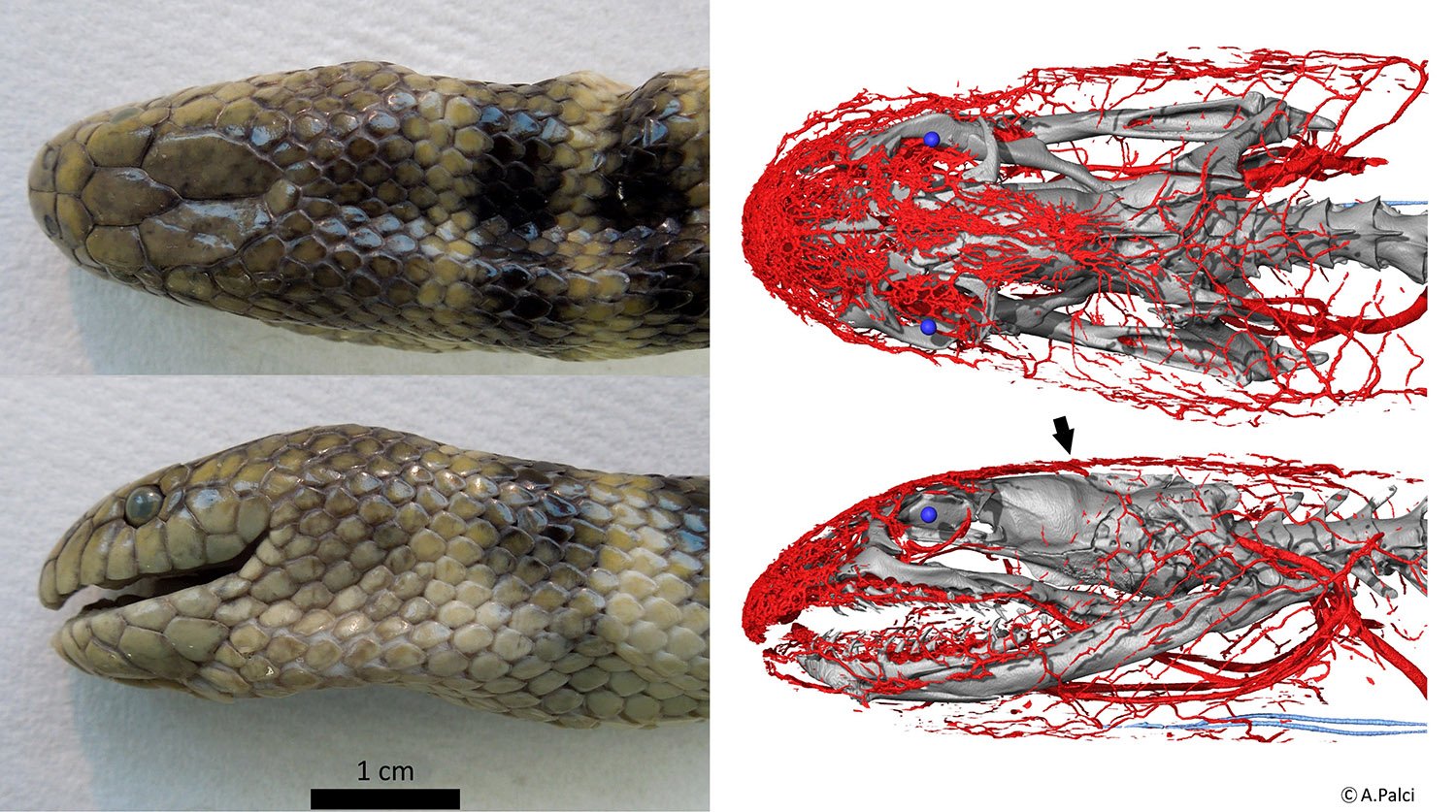Humans use a snorkel and fish have gills. Now researchers have found a sea snake which uses a complex system of blood vessels in its head to draw in extra oxygen when it dives and swims underwater.
During submersion, the blue-banded sea snake (Hydrophis cyanocinctus) is now thought to use an extensive vascular network across the top of its head to absorb oxygen from the surrounding water.
“For the first time, we describe this modified cephalic vascular network (MCVN) that provides this sea snake with a complementary supply of oxygen to the brain during submersion,” says lead researcher, Flinders University evolutionary researcher Dr Alessandro Palci, who is a visiting researcher at the University of Alberta, Canada.

“Basically we found that this sea snake uses the top of its head as a gill to breathe underwater,” says Dr Palci.
[ad_336]
The highly venomous blue-banded sea snakes, which live in tropical waters of Southeast Asia, are found on coral reefs and warm coastal waters. Sea snakes must surface regularly to breathe but are among the most completely aquatic of all air-breathing vertebrates.
The vascular network, located just under the skin of the snout and forehead of the snake, surprised researchers in their new study.
“While the MCVN is structurally very different from the gills of fish and amphibians, its function is nonetheless quite similar, in that it provides a large surface area packed with oxygen-depleted blood vessels that can efficiently take in oxygen from the surrounding water,” Dr Palci says.
ARC Future Fellow Dr Kate Sanders, from the University of Adelaide School of Biological Sciences, says the latest study expands understanding of the unusual cutaneous respiratory anatomy of sea snakes.
“Sea snakes have been extremely successful at adapting to a fully marine lifestyle, including the ability to absorb oxygen through their skin,” Dr Sanders says.
[rand_post]
“Now we have discovered this interesting feature in H. cyanocinctus by using microCT scans and computer modelling.
“This feature probably allows these sea snakes to stay submerged for longer periods of time, which further research can test.”
Mr Palci, with experts from the South Australian Museum, Vietnam Academy of Science and Technology, and University of Adelaide, modelled the snake’s special feature.